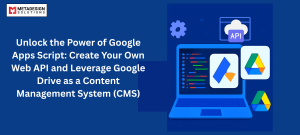Introduction:
In this article, we will discuss the best security practices that software developers can implement when developing web APIs. We will cover everything from securing authentication protocols to securing the database and implementing rate limiting.
Use HTTPS:
One of the most basic but essential steps in securing web APIs is to use HTTPS protocol. HTTPS protocol ensures that communication between the client and the server is encrypted, preventing man-in-the-middle attacks and keeping sensitive data secure.
In addition, HTTPS also ensures that the API cannot be accessed by unauthorized users. By using SSL/TLS certificates, the server can be authenticated, and communication between the client and the server can be secured. Therefore, it is always recommended to use HTTPS protocol when developing web
APIs.
Validate Input:
Input validation is an essential step in securing web APIs. All input data should be properly validated to prevent any potential injection attacks. Injection attacks occur when an attacker inputs malicious code into a web form or an API endpoint, and the server processes it as valid input.
To prevent injection attacks, developers should validate all user input and ensure that it meets the expected format. The input validation process should include checks for length, format, and character sets. Additionally, developers should sanitize input to ensure that it does not contain any malicious code.
Strengthen Your API Security
Looking to safeguard your APIs from vulnerabilities? Schedule a call with our experts to explore how we can help you apply the best security practices in your web APIs.
Limit Access:
Limiting access to your API is crucial to protect it from unauthorized access. Developers should require authentication and authorization to access the API. This can be done using OAuth 2.0 or JWT tokens.
OAuth 2.0 is a standard protocol for authorization, and it allows users to grant third-party applications access to their resources. JWT tokens, on the other hand, are an industry-standard for authentication and authorization, and they are used to secure web APIs.
Secure Your Authentication Protocol:
Secure authentication protocols are essential when developing web APIs. Developers should use secure authentication protocols such as OAuth 2.0 or OpenID Connect to secure their APIs. These protocols use encryption and hashing to protect sensitive data and prevent unauthorized access.
In addition, developers should implement two-factor authentication (2FA) or multi-factor authentication (MFA) to add an extra layer of security. 2FA requires two forms of identification, such as a password and a fingerprint, to access the API. MFA requires additional forms of identification, such as a PIN or a security token.
Secure Your Database:
The database is a critical component of any web API, and it must be secured properly to prevent data breaches. Developers should use strong passwords, encryption, and other security measures to secure the database. The database should also be regularly backed up to ensure that data can be recovered
in the event of a disaster.
To prevent SQL injection attacks, developers should use parameterized queries instead of dynamic queries. Parameterized queries use placeholders instead of direct input, which prevents malicious code injection into the SQL query.
Implement Rate Limiting:
Rate limiting is the process of limiting the number of requests that can be made to an API within a certain period. This prevents the API from being overwhelmed by too many requests and helps protect it from denial-of-service (DoS) attacks.
Developers should implement rate limiting to ensure that the API can handle incoming requests without being overloaded. Rate limiting can be implemented by setting a limit on the number of requests per second or per minute, or by setting a limit on the amount of data that can be requested.
Conclusion:
In conclusion, implementing best security practices is essential when developing web APIs to ensure that they are secure and protected from cyber threats. By using HTTPS, validating input, limiting access, securing authentication protocols, securing the database, and implementing rate limiting, developers can build secure and reliable web APIs.
While these practices may seem simple, they can go a long way in ensuring the security and integrity of your web API. As a developer, it is your responsibility to protect your users’ data and ensure that your API is not vulnerable to cyber attacks.
In addition to the practices outlined above, it is also important to keep up-to-date with the latest security trends and vulnerabilities. Developers should regularly update their software and patches to ensure that they are protected from any newly discovered threats.
Finally, it is important to remember that security is an ongoing process. Developers should regularly review and update their security practices to ensure that their web APIs remain secure and protected.
In conclusion, securing web APIs is crucial in today’s digital world. By implementing the best security practices outlined in this article, developers can build secure and reliable web APIs that protect user data and prevent cyber attacks.
Related Keyphrase:
#WebAPI #APIDevelopment #WebSecurity #SoftwareDevelopment #APIsecurity #TechSolutions #SecurityBestPractices #APISecurity #WebAppSecurity #SecureAPIs #APIProtection #SecurityForDevelopers #APIAuthentication #TechConsulting #APIservices #SecurityImplementation #HireDevelopers #SoftwareDevelopmentCompany #HireAPIExperts #APIsecurityServices #WebAppDevelopment #CustomAPIdevelopment #APIdevelopmentCompany #AppDevelopmentServices #SecurityDevelopment #APIEncryption #APIKeyManagement #SecureDevelopment #SoftwareSecurity #TechInnovation #APIIntegration #APIsecurityBestPractices #WebDevelopment #TechInSecurity #AppSecurity #APIservicesCompany #HireWebDevelopers #WebAPIdevelopment #SecureCoding #AppSolutions #CloudSecurity #SoftwareDevelopmentServices #APIExperts #APIdevelopmentServices



